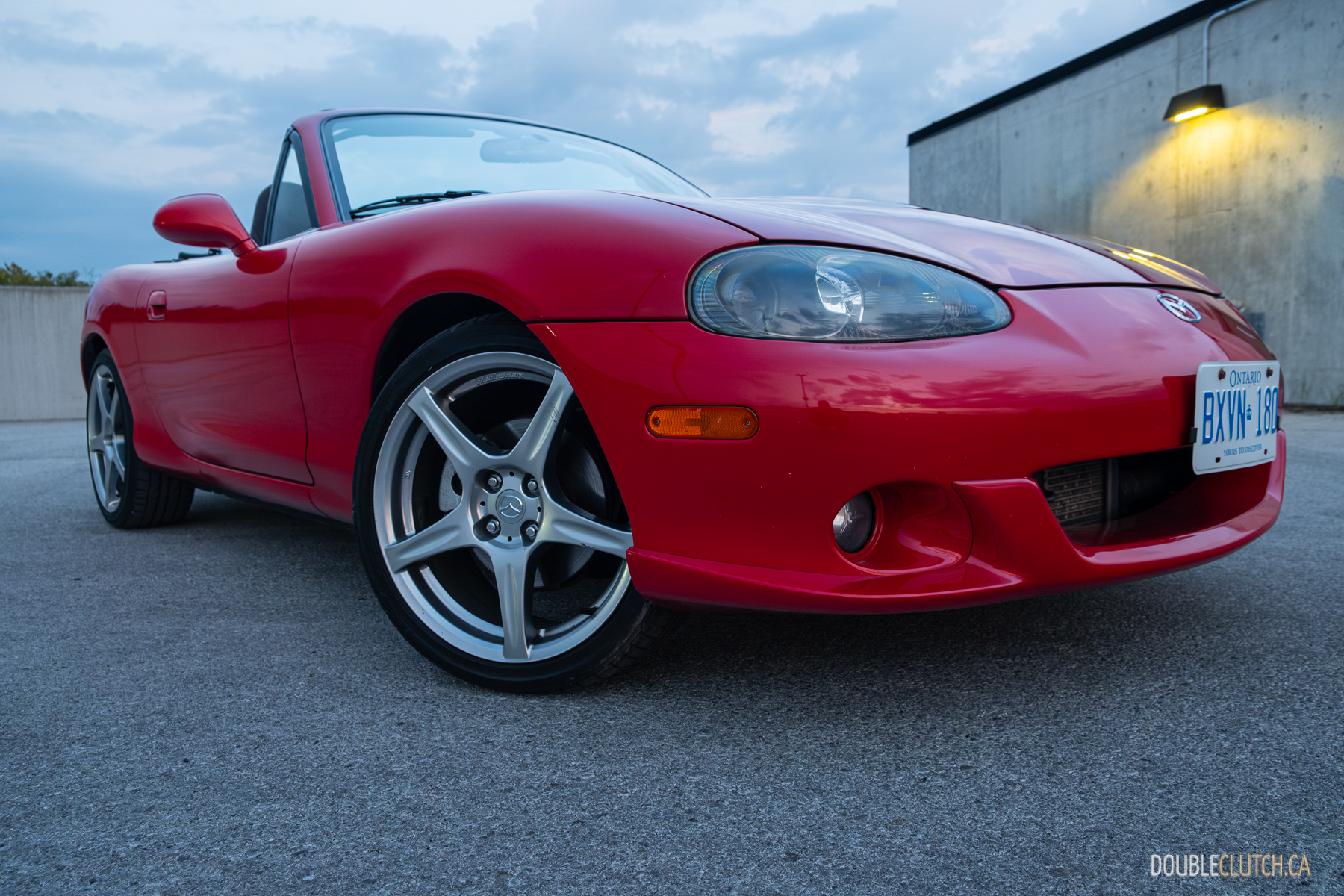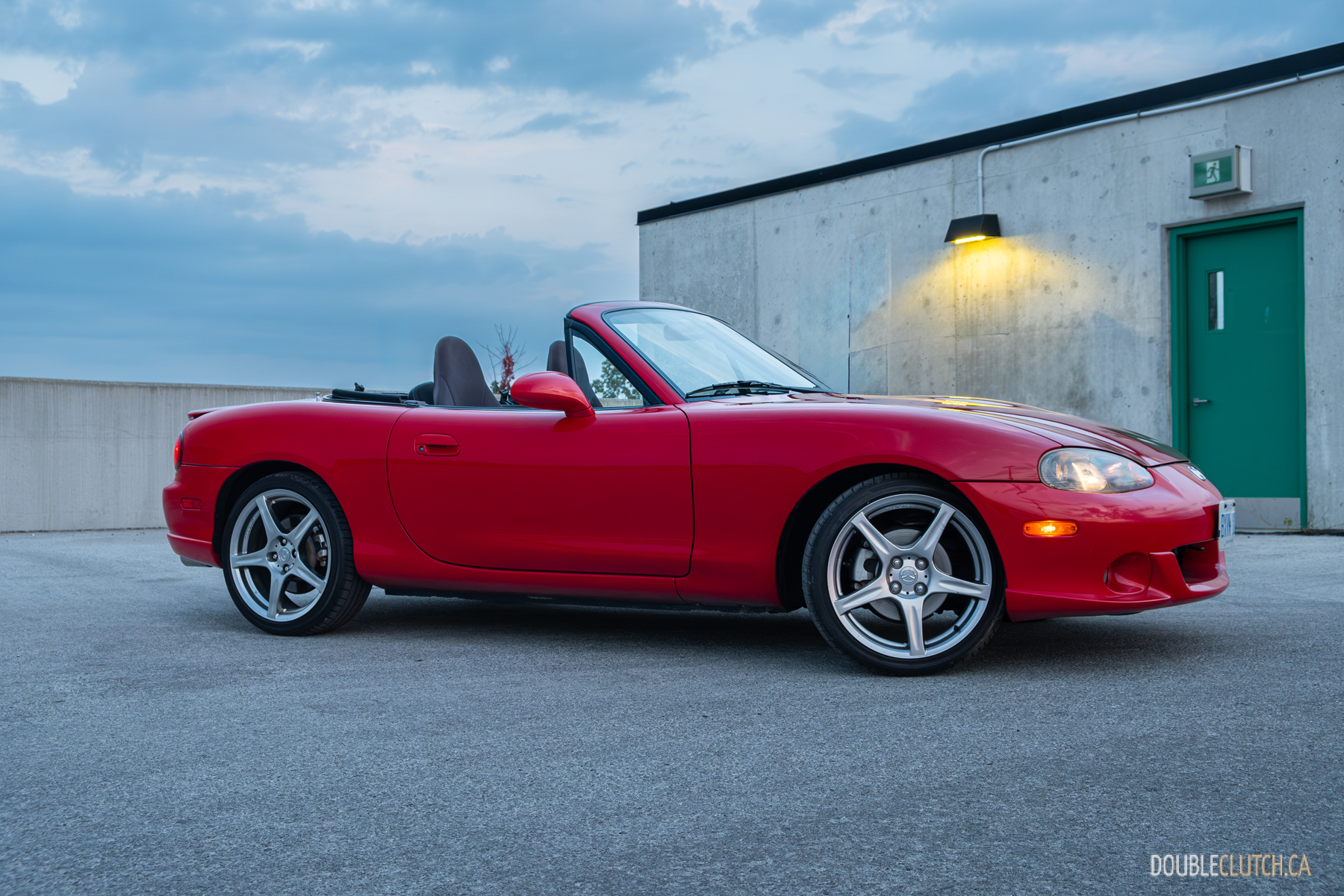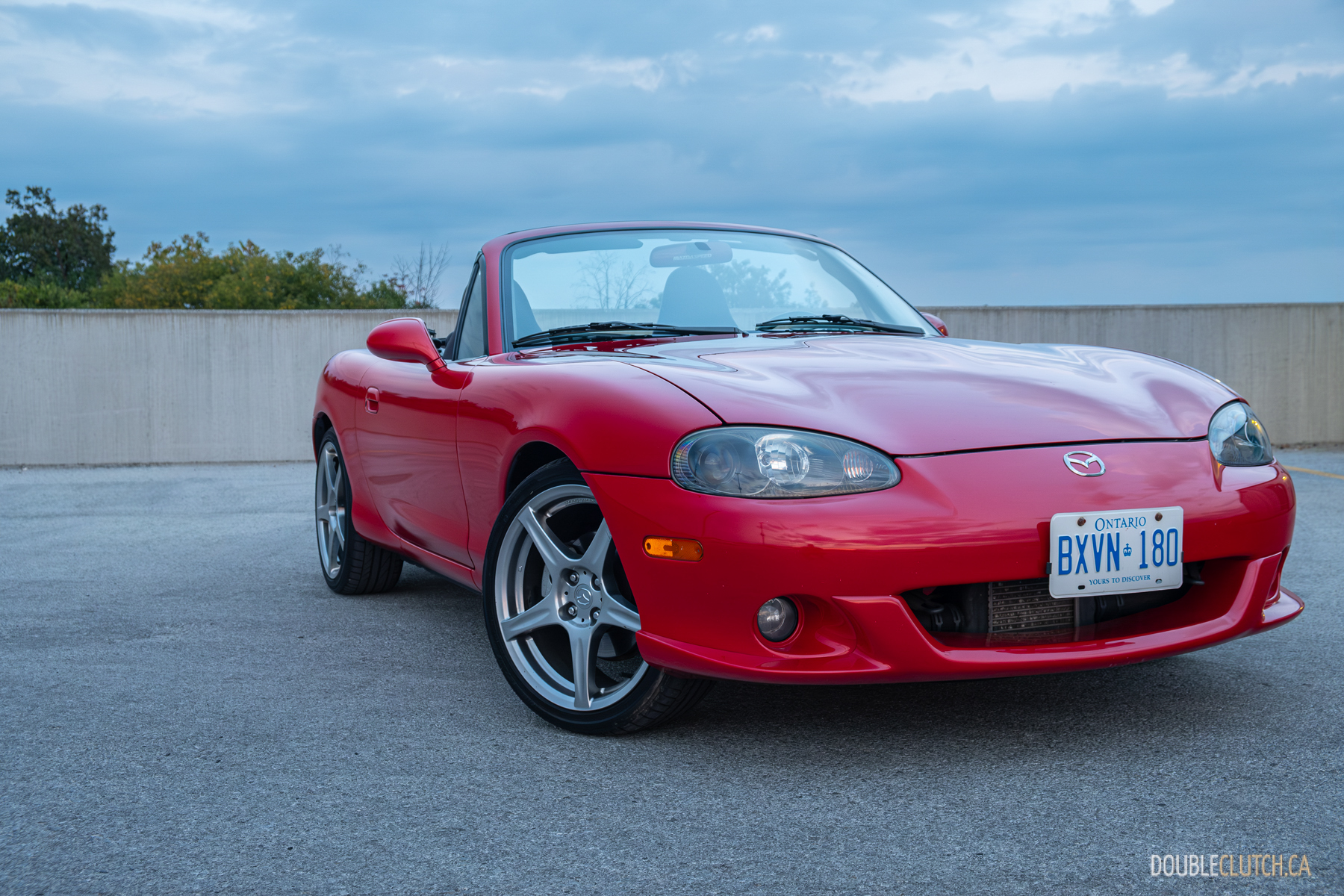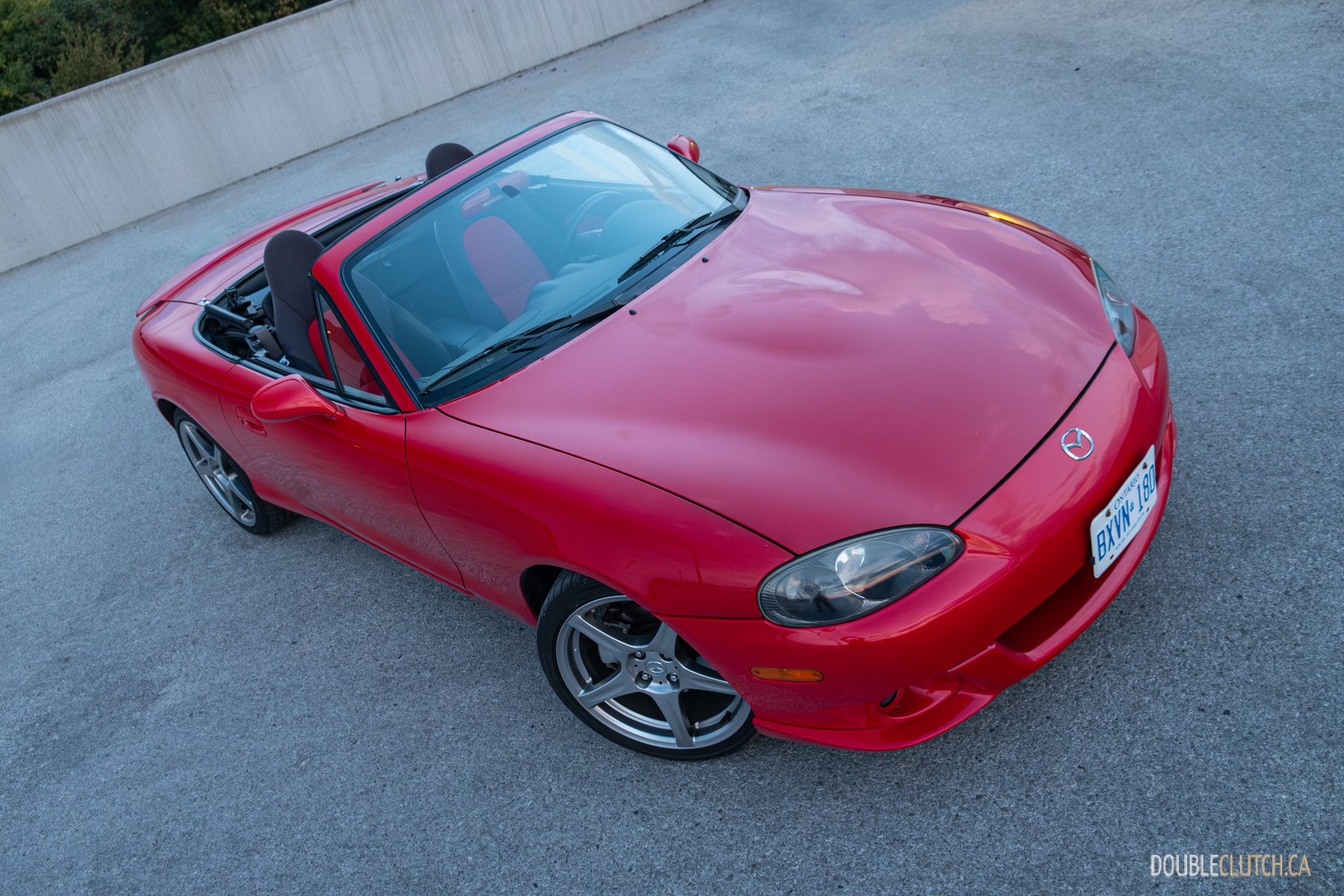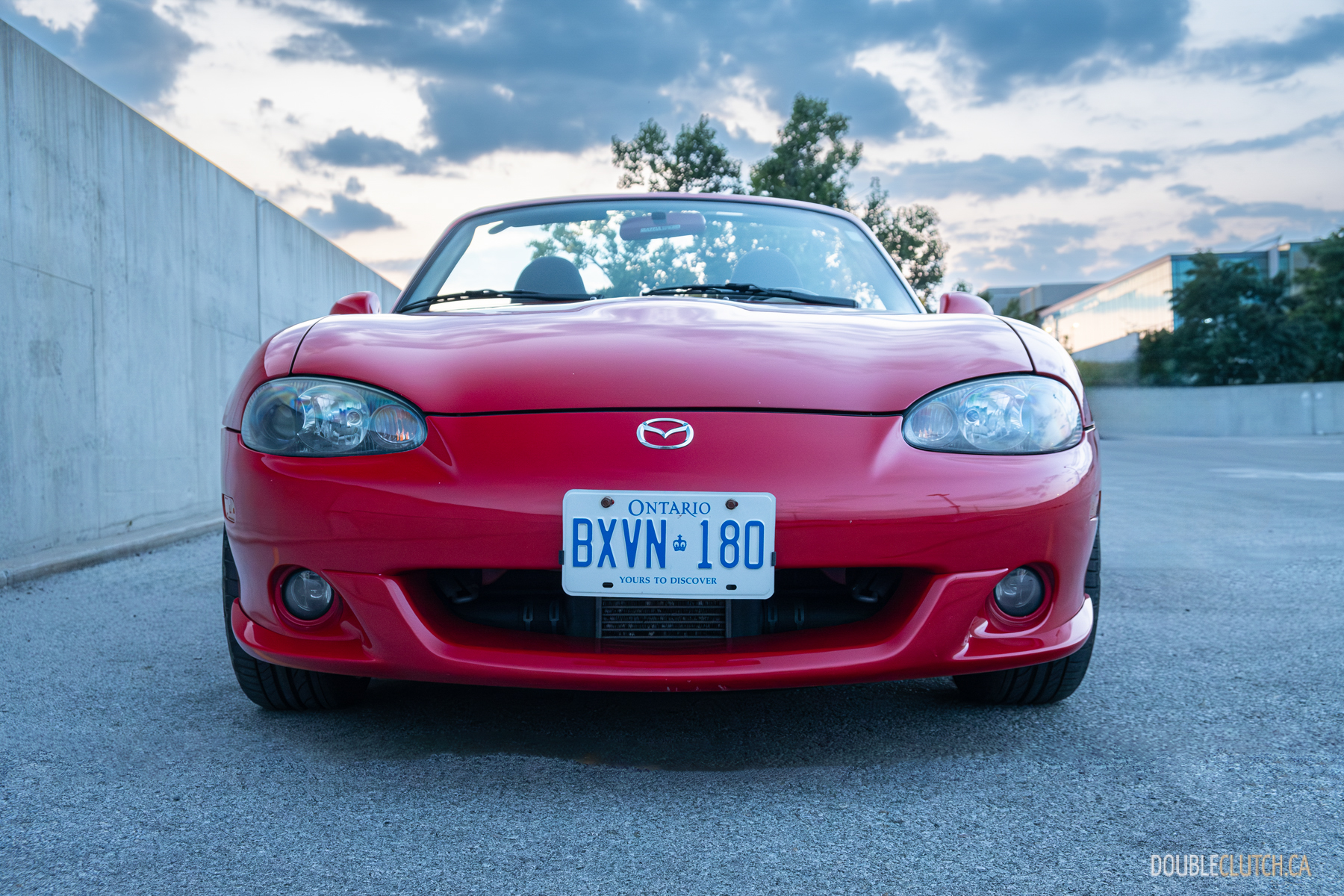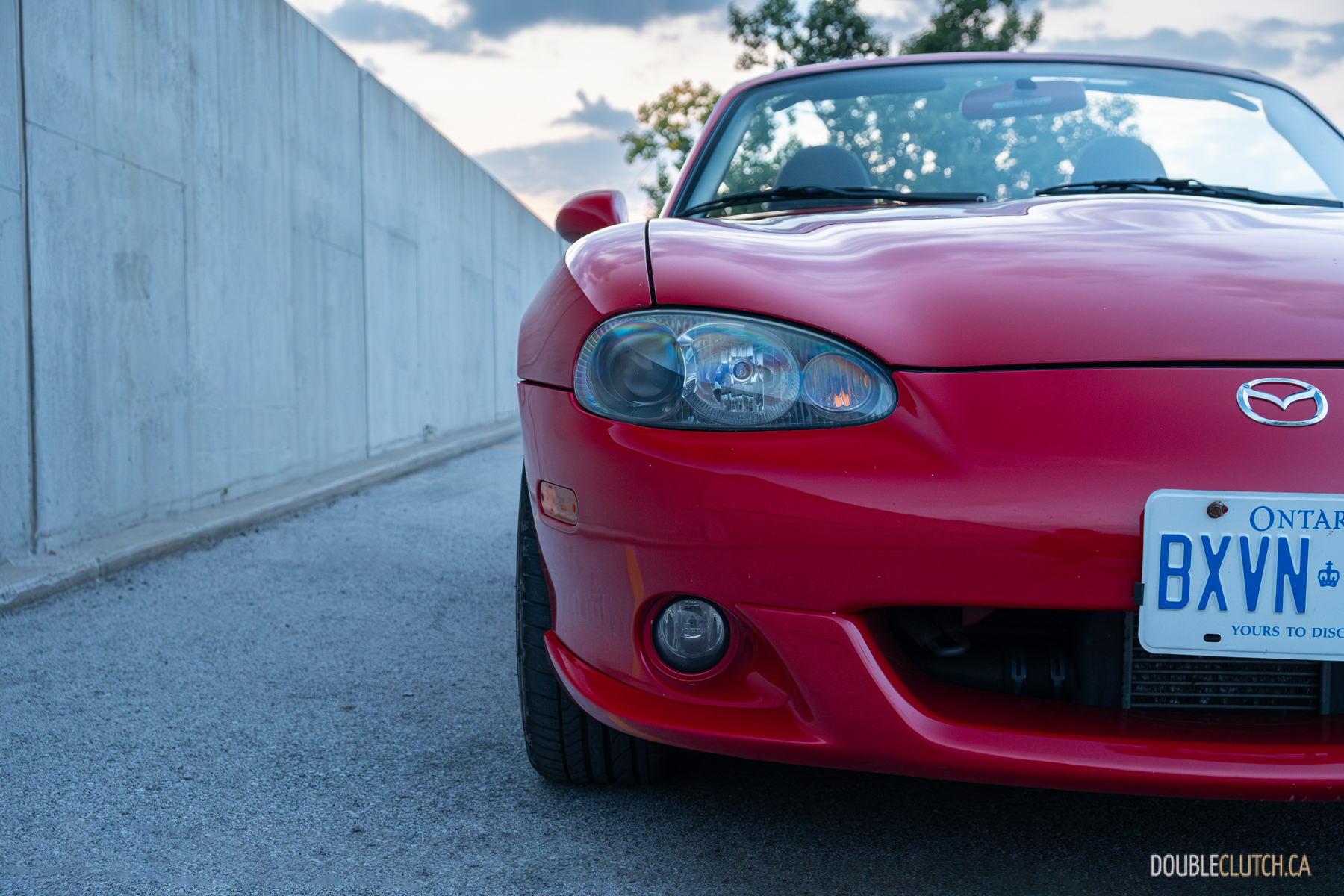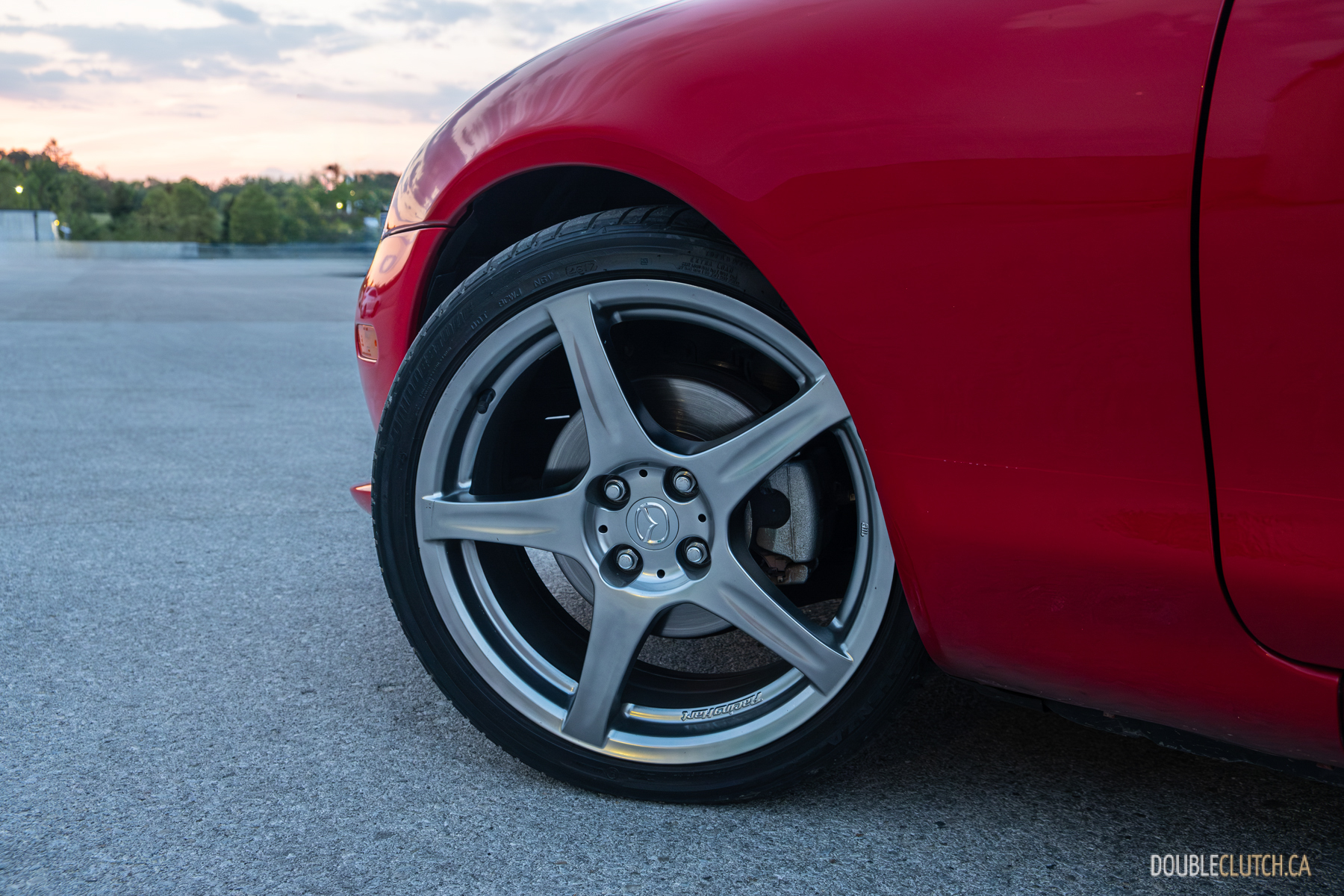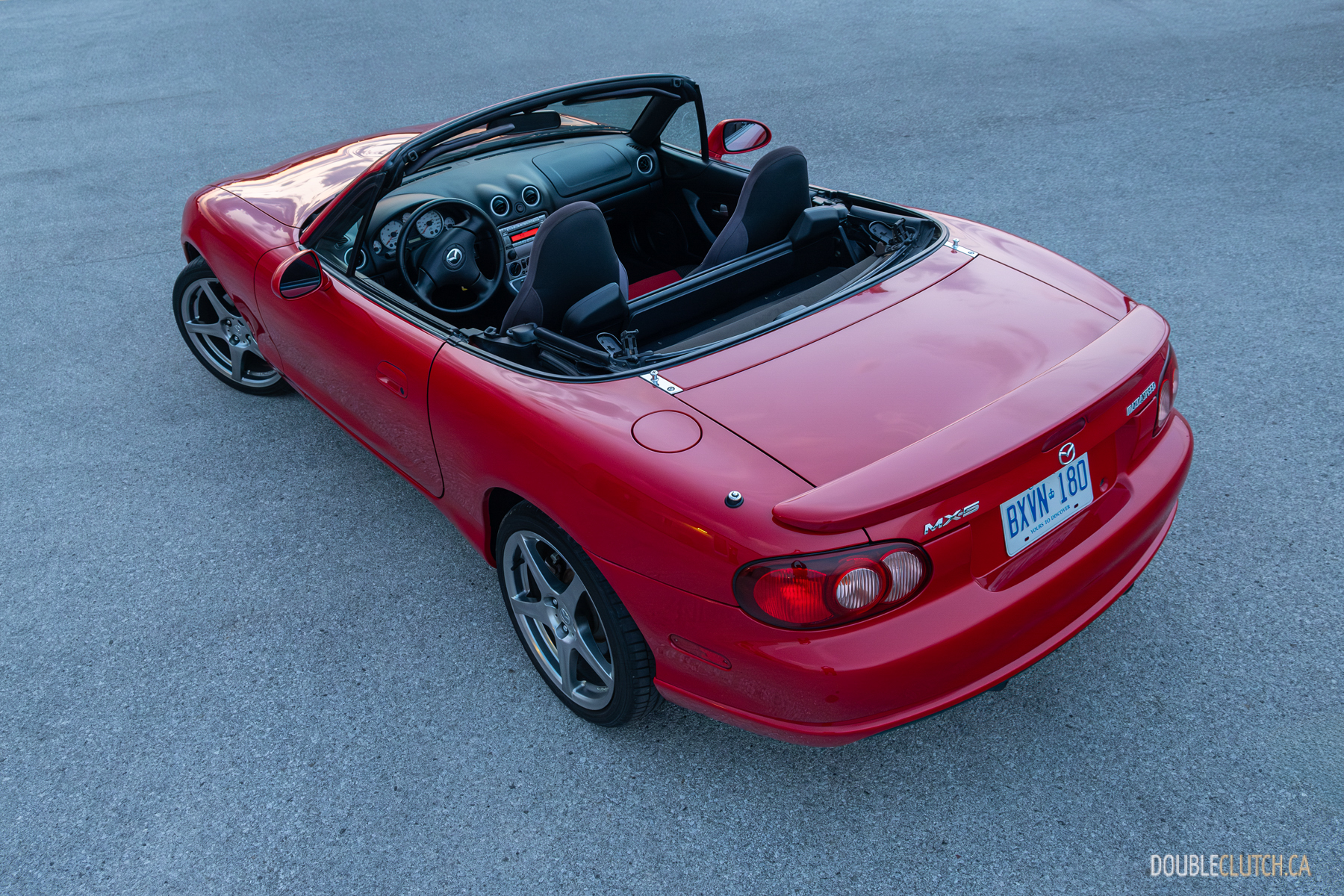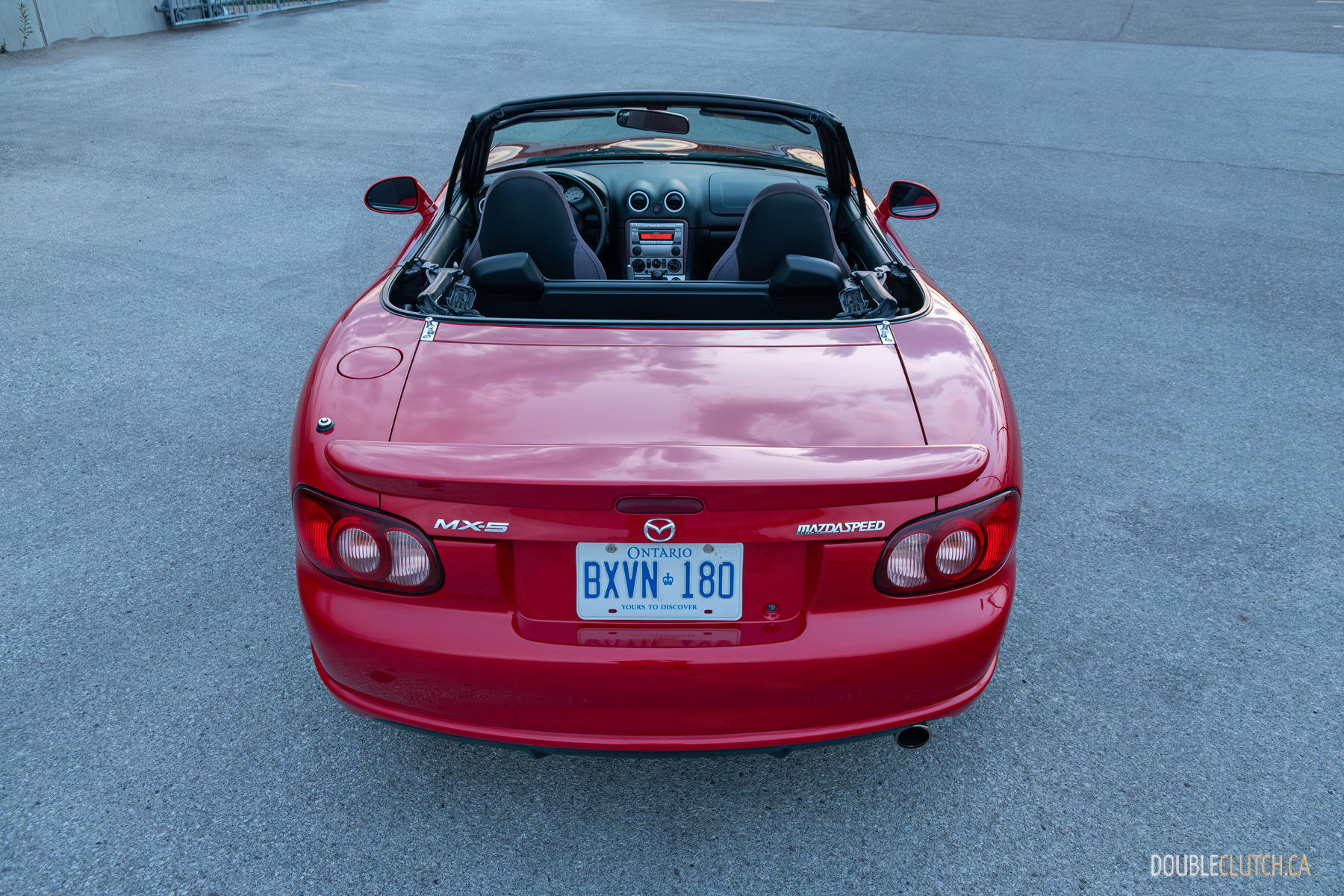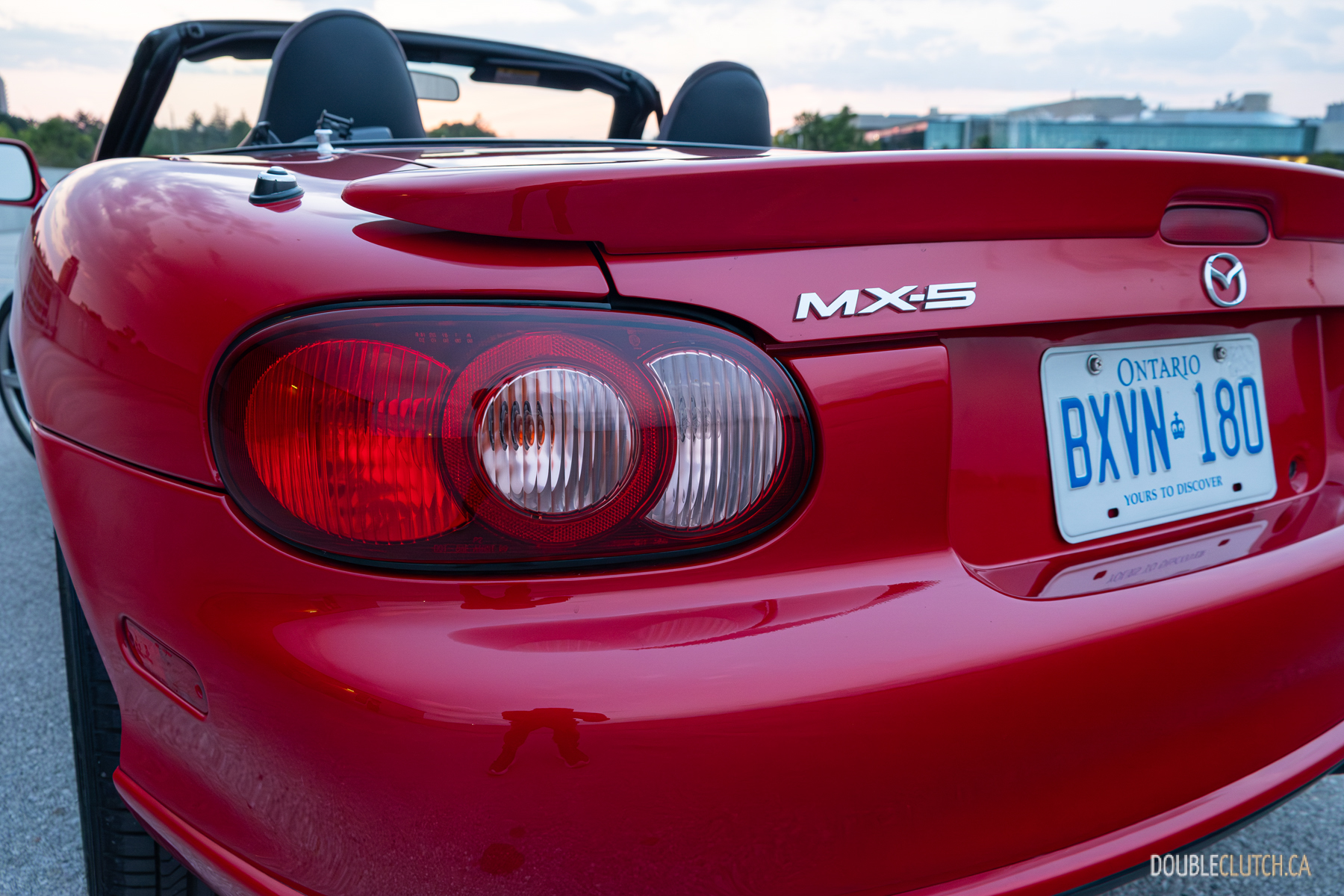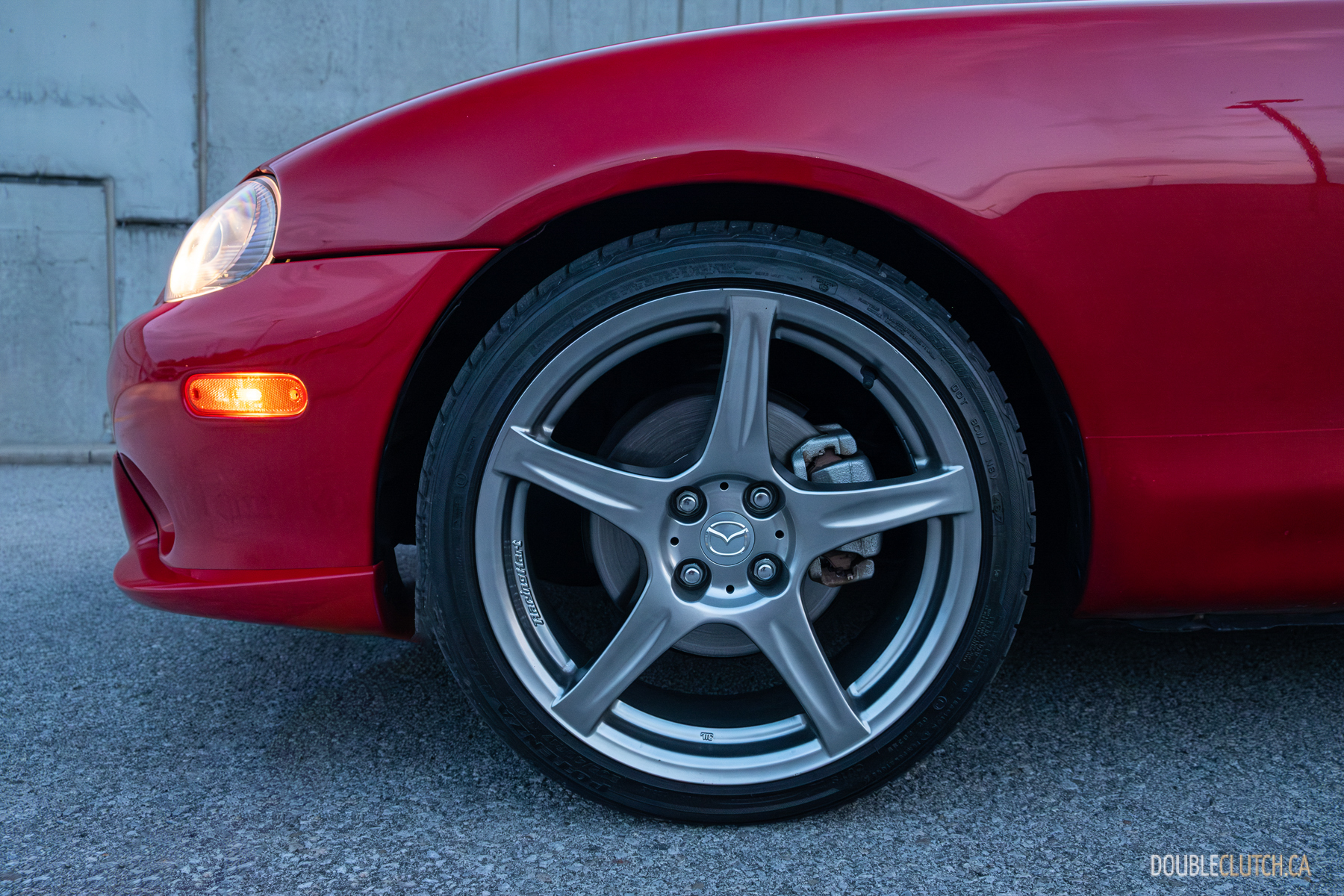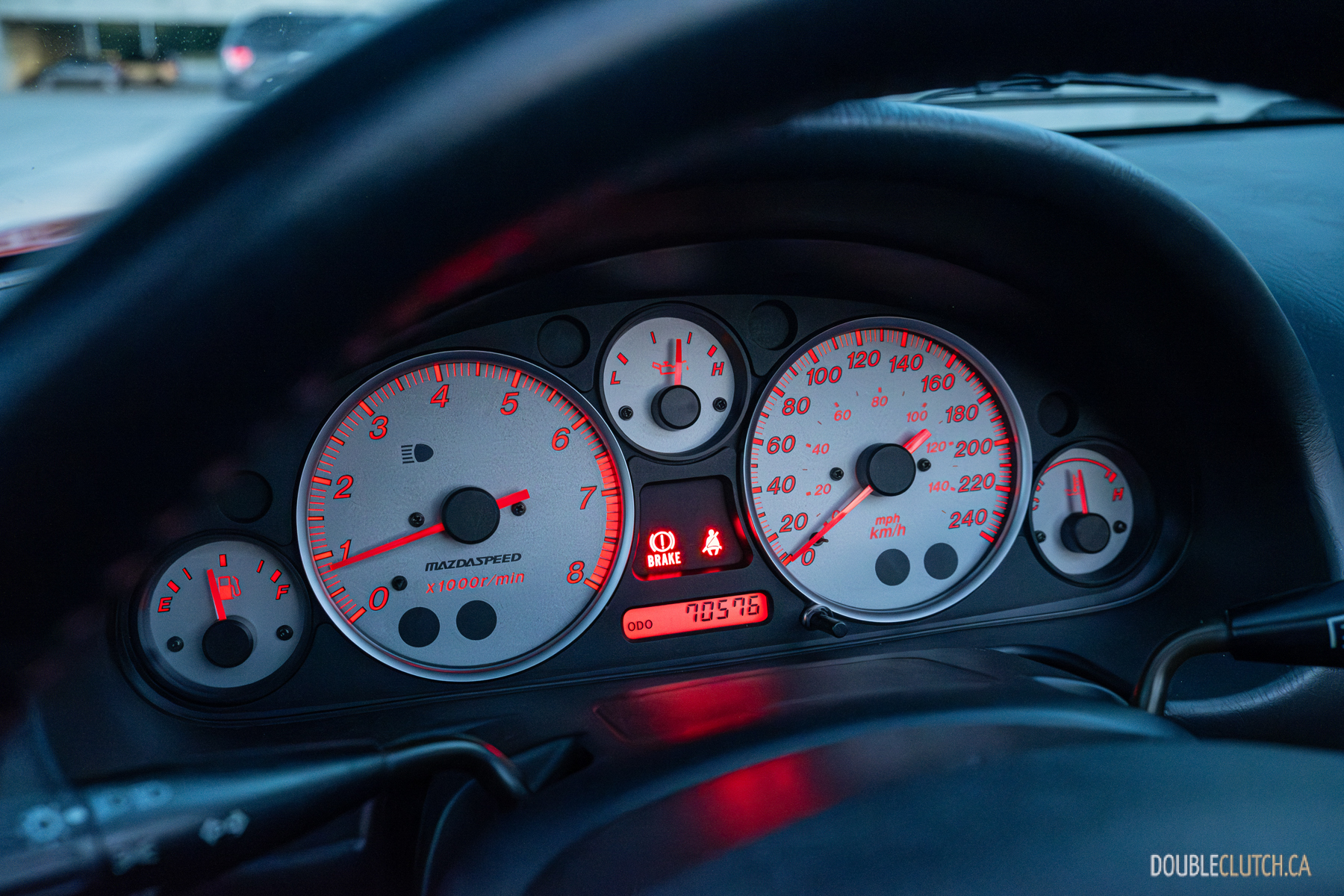Zero-to 100 km/h in 6.7 seconds; 178 horsepower and a measly 166 pound-feet of torque. Yes, a new Honda Odyssey minivan will edge past this 2004 Mazdaspeed MX-5 Miata in a straight-sprint, but you’re using the wrong lens for this picture.
This isn’t a numbers car. Throw all that stuff out. This isn’t a head-to-head comparison, either. Forget that. It isn’t a car you flex with, either, so forget impressing bros at car meets — unless they’re big Mazda fans. Instead, the Mazdaspeed MX-5 Miata is something you pull out on a crisp morning before everyone else is awake, go for a long trip down some backroads, see no one, speak to no one, and come back completely satisfied with how you just spent your time.
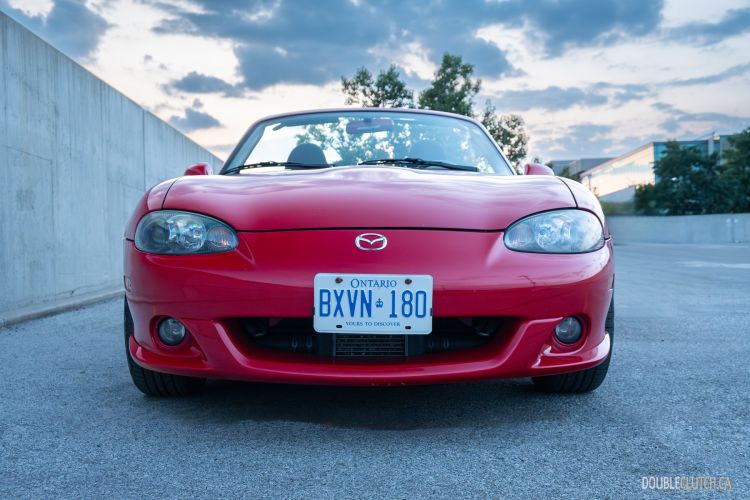
Let’s get the rest of the numbers out of the way first. Offered in North America only for the 2004 and 2005 model years, this is the only Miata to ever come from the factory with a (small) turbocharger. Where most new turbocharged four-cylinder cars push out more than 20 psi of boost, the Mazdaspeed Miata conjures up a paltry 8.5 psi to its 1.8L four-cylinder engine. You have to work for the power, too — you get 178 horses at 6,000 rpm and the 166 lb-ft of torque at a relatively-high-by-today’s-standards 4,500 rpm. All Mazdaspeed Miatas put the power down to the rear wheels via a six-speed manual transmission, and got a limited-slip differential.
It all adds up to a curb weight of just under 2,600 pounds. Looking at the Mazdaspeed Miata against virtually anything else today reinforces just how small and lithe this thing is — I’m five-foot-10 with an average build, and it felt borderline too small.
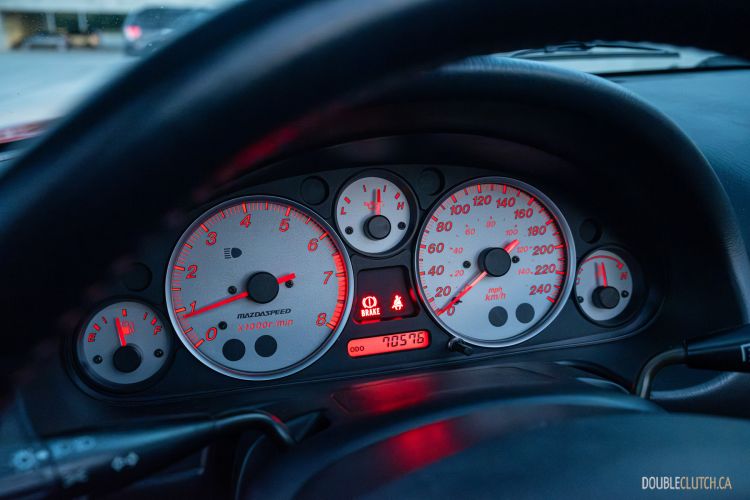
Interior amenities certainly exist. The Bose audio system actually sounds decent as long as you aren’t moving, as wind noise will drown out anything, even around town. You also get keyless entry, power windows, and power mirrors, although the fabric roof is still manually operated. The seats are comfortable and trimmed in black with racy red inserts, and the gauges are period correct for the mid-2000s — white-faced analog pieces — that are simple, clean, and easy to read. The orange illumination is a nostalgic hit as well, and I absolutely love it.
Get the Mazdaspeed Miata out on an open road, and it comes to life. The clutch and shifter combo are nearly perfect, with short clutch pedal travel and the shifter itself is precise and notchy enough. I still give the edge to Porsche and Honda for manual shift feel — the Miata’s ‘box got hung up on a few quick three-to-two and four-to-five shifts a couple of times, something I haven’t experienced in a Porsche or Honda. That said, gear ratios are short, so you’re rewarded with the opportunity to shift often even in the most mundane commutes.
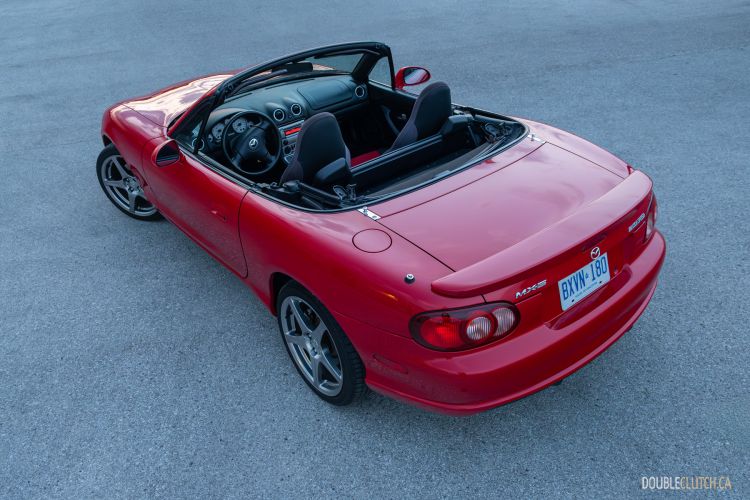
I didn’t expect the soundtrack to be so muted — you get some induction noise, and turbo ‘wooshes’ are certainly present — but it’s ultimately a less-than-memorable soundtrack and almost too quiet. But the chassis made up for all that: it’s lightness and sense of tossability is matched by very few cars today. Steering feel is fantastic, with just the right amount of weight and feedback, reminding us why we miss hydraulic racks so much.
Despite being turbocharged, you have to work for the power. It doesn’t come on until much higher in the rev range — power starts to build just under 4,000 rpm and then really hits around 5,500, but redline hits at 6,600 rpm — so this turbocharged Miata never bites you. It’s easy to exploit everything this motor and chassis combination offers.
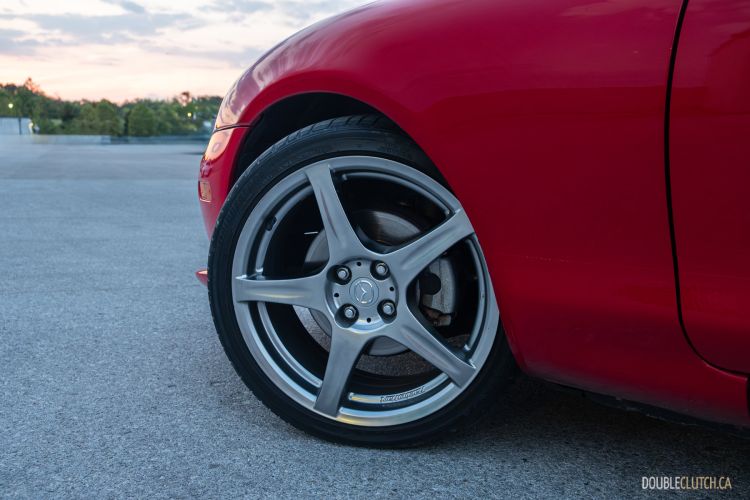
Surprisingly, the suspension doesn’t beat you up, coming in slightly softer than expected but still wholly competent as a backroads dance partner. The chassis does show its age when you hit a few bumps, and feel a bit of flex, but it’s nothing too jarring and par for the course for a droptop from the early 2000s. Miata purists blast the stock 17-inch Racing Hart wheels for being heavy, but I dig the design. They’re wrapped in low-profile 205-section Bridgestone RE050A tires — pretty much bicycle tires today — yet the Mazdaspeed never felt ‘under-tired’ in the least and inspired all the confidence you’d ever need to explore its limits.
Down a twisty backroad, the Mazdaspeed Miata shines. It’s about more than the numbers, more than the sum of its parts; it corners with confidence, easily puts the power down, and the perfectly weighted steering goes along with the lightweight chassis to make you feel one with the road at every moment. If you want to feel like a better driver than you really are — or better yet, connected with everything — the Mazdaspeed Miata gives you that in spades.
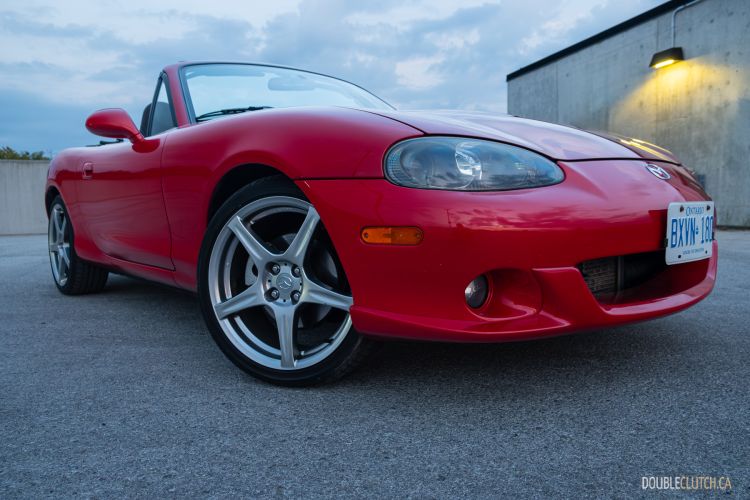
This almost-20-year-old Miata — or should I say MX-5, for some boneheaded reason — isn’t perfect. Like the present-day version, it offers little in terms of practicality, space, or — let’s be frank — actual performance. Yet the Mazdaspeed Miata won me over through and through, more than living up to the “it’s better to drive a slow car fast, than a fast car slow” mantra. You can’t help but smile with this car. You can explore its very reasonable limits without breaking the law. You can floor it, bang through the gears, and heel-toe downshift on your errands, commute to work, or even nowhere in particular.
This is a car for people who want to drive, and could care less about what other people think — but I should clarify I’ve never received so many compliments and thumbs-ups behind the wheel of this little red Mazda, not even behind the wheel of a Porsche or a Ferrari. The Mazdaspeed Miata is made to drive, to make you happy, not to flex on others.
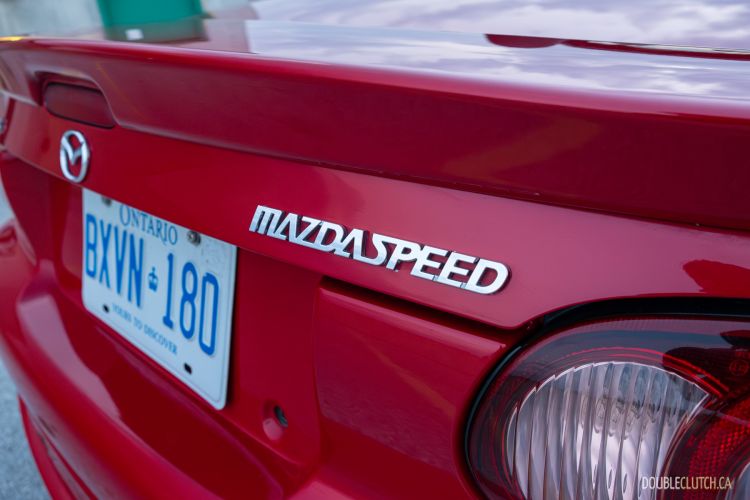
They also happen to be a great bargain on the used car market. You can find a clean Mazdaspeed Miata near the $20,000 mark, and I’d even think twice before spending about double that for a Honda S2000. That’s something I never expected to say, since as a lifelong Honda fan, the S2000 holds a special place in my heart.
A heart that, thanks to the 2004 Mazdaspeed MX-5 Miata, seems to be going more zoom zoom these days.
See Also
I finally understand the 2023 Mazda MX-5


